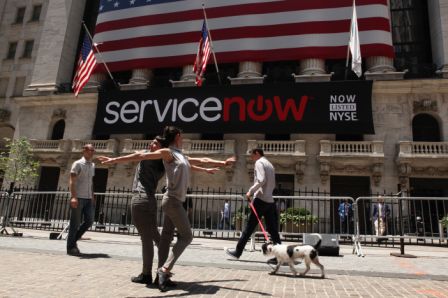A peripatetic summer yielded this Financial Times essay earlier this month on outdoor shows. I noticed an ideological split among the presenting organizations:
The free outdoor shows peppering New York and and the outer boroughs each summer always have their separate agendas but this year a stark divide emerged. On one side was the community-building event, in neighbourhood parks from the South Bronx to central Brooklyn to the banks of the East River. The art mattered insofar as it drew spectators together and lifted them up. On the other side was site-specific experimental dance aimed to shock the bourgeoisie or at least the workers on their lunch breaks and tourists. It may be possible both to flout convention and to empower, but it did not happen on my watch.St Mary’s Park is a 10-block-long, five-avenue-wide, tree-shaded oasis just beyond a grimy strip of the South Bronx that the City’s sanitation department has apparently neglected for decades. At the northwest corner of the park, picnics, birthday parties, barbecues and children were everywhere, the kids dashing in and out of a makeshift fountain, lining the basketball courts to watch the pick-up games, and dancing to their gathering’s particular soundtrack – salsa, reggaeton or soul.Up the hill and insulated from the cacophony, Ana “Rokafella” García, co-founder of the excellent Full Circle hip-hop troupe, was expertly hosting a Bronx-inflected street, folk and club dance extravaganza for the City Park Foundation’s Summerstage. She kept things tight. Whether the dancers specialised in Afro-Caribbean, salsa, vogue, brukup or forms of hip-hop, segments were limited to 15 minutes. Afterwards, each troupe had a chance to describe its idiom and how we might learn the moves. Websites and practice days were shouted out.The organisers and dancers wanted the crowd to “aspire” – to Keep Rising to the Top, as one spunky youthful East Harlem group called itself. But when the performers included Brooklyn brukuppers capable of insane feats of double-jointedness and a salsa dancer in knee-high boots undulating her hips and swivelling her feet faster than a Dancing with the Stars pro, emulation seemed out of the question.The last act offered a less outlandish vision of hope. All the evening’s dancers joined in a freestyle circle – a phenomenon the South Bronx invented- and took turns in the centre to pop, lock, primp, lope, spin on their heads, and more. The dancers were co-operative and individualistic – enthusiastic about one another and proud of their own signature moves. These last moments held out a beautiful promise: there will be room for each of us, in our idiosyncrasies, as long as there is room for all of us.Manhattan’s River to River festival tends to favour, by contrast, a spiky approach to the audience. Even those who showed up expressly for the event – and River to River’s focus on work embedded in the urban landscape encourages the opposite, an accidental audience – were unprepared for the startling opening of Uruguayan émigré Luciana Achugar’s FEELingpleasuresatisfaction-celebrationholyFORM.From the far end of a covered arcade in Tribeca, four Cousin Itt mop-heads above bare womanly legs strode toward us shoulder to shoulder. Once near, the faceless women manoeuvred their jeans up to their hips without the use of their hands: they wiggled and kicked. They flopped on the concrete like beached sea lions and pressed themselves against the glass façade of the new Conrad Hotel opposite us.Feel … Form was outrageous and funny, but the humour was edged with cruelty.
For how so, and for my take on the equally subversive but less confrontational Show by Maria Hassabi, staged opposite the Stock Exchange,

Hristoula Harakas and choreographer Maria Hassabi. Photo by Julieta Cervantes for River to River.
click here. (If you hit a registration wall, registration is onetime and no cost, and gives you access to 30 FT articles per month.)

Leave a Reply